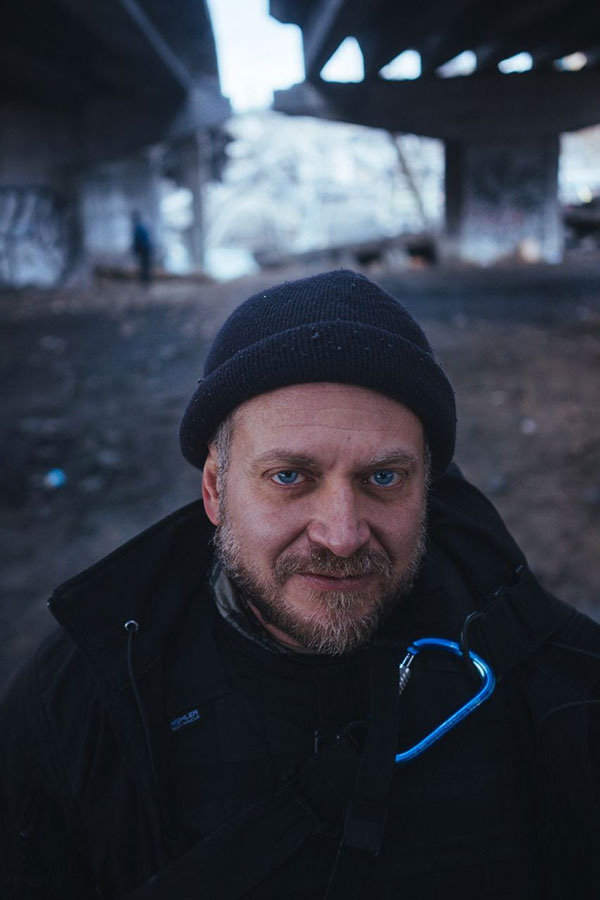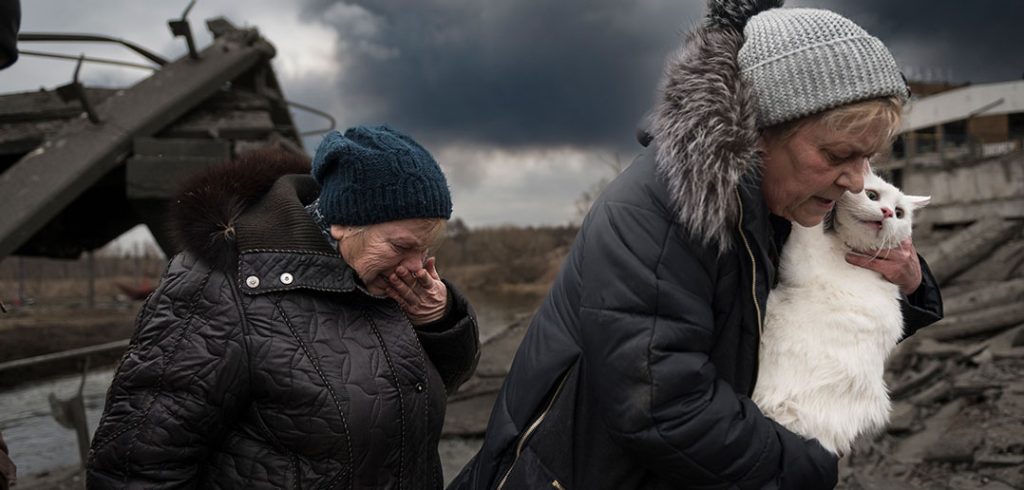Warning: This article includes graphic depictions of war some readers may find disturbing.
Since February 24, when Russia launched a full-scale invasion of Ukraine, escalating a conflict that began eight years earlier, Christopher Occhicone, FCRH ’95, has been chronicling the war and its impact on people of all ages and stations in life. A freelance photojournalist and native New Yorker, Occhicone traveled to Ukraine soon after the February 2014 Maidan revolution, when protesters ousted a pro-Russian president. That prompted Russia to seize the Crimean Peninsula and help separatists occupy parts of the Donbas region in the east.“I came immediately when the war started and ended up right in the middle of mayhem in eastern Ukraine very quickly,” he said.
In recent months, his pictures have been published in The Wall Street Journal, The Atlantic, and other publications. He was among the first to document the mass killings of unarmed civilians in Bucha. In April, he photographed the country’s embattled leader, Volodymyr Zelenskyy, at the presidential compound in the capital, Kyiv. And in June, he spent time with soldiers near the front line in the Donbas. One of his pictures—of a young woman rescuing dogs from a shelter in Irpin amid Russian attack in the early days of the war—has taken on a life of its own as a symbol of Ukrainian resistance.
It’s the kind of work that Occhicone has wanted to do since he was an undergraduate at Fordham in the early 1990s, when a friend and fellow classmate of Croatian descent showed him magazine stories depicting war in the former Yugoslavia. “I remember the pictures, I remember who took them, and it became a kind of goal of mine” to become a war photographer, Occhicone said by phone from Kyiv in early March.
Another inspiration, he said, was his grandfather, a World War II veteran who lived in the Belmont neighborhood of the Bronx, near Fordham’s Rose Hill campus. “The family dream was always to go to Fordham,” Occhicone said. “That was like success, you know? He came from Italy, and seeing the Fordham guys, [he thought], one day, somebody in our family will go there.” Occhicone’s grandfather died in 2017 at 101.
“He talked about [his war experiences] until maybe his last day, and it was always about the comradeship and the bonding,” Occhicone said. “That’s something I wanted to understand.”
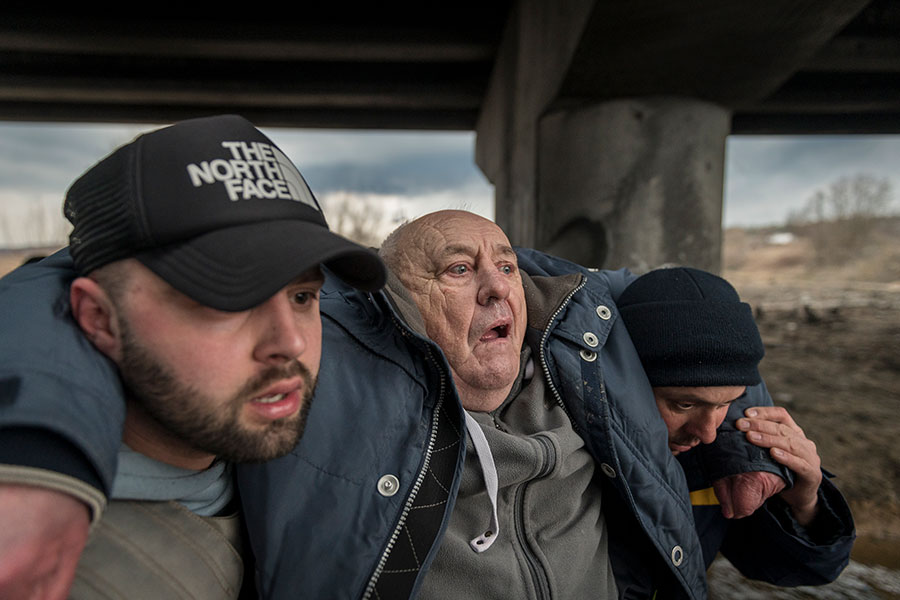
Evacuating Civilians Amid the Battle of Irpin
On Saturday, March 5, as Russian forces surrounded Kyiv on all sides but the south, Occhicone joined a convoy of volunteers who arranged to help evacuate several dozen people hiding in a church basement in Irpin, a city about a dozen miles northwest of Kyiv. To help slow the Russian advance, Ukrainian forces had blown up a bridge over the Irpin River, one of the main routes leading out of the city toward Kyiv.
“We were deep in the city [bringing people out], and in the middle of it, we started getting shelled—small arms fire flying overhead, tanks shooting buildings maybe 200 meters away,” Occhicone said the next day. “We were able to get out, but right in front of us, maybe like a couple of hundred feet, guys blew up a Russian vehicle, a road was closed. It was just chaotic. You don’t know who’s where.”
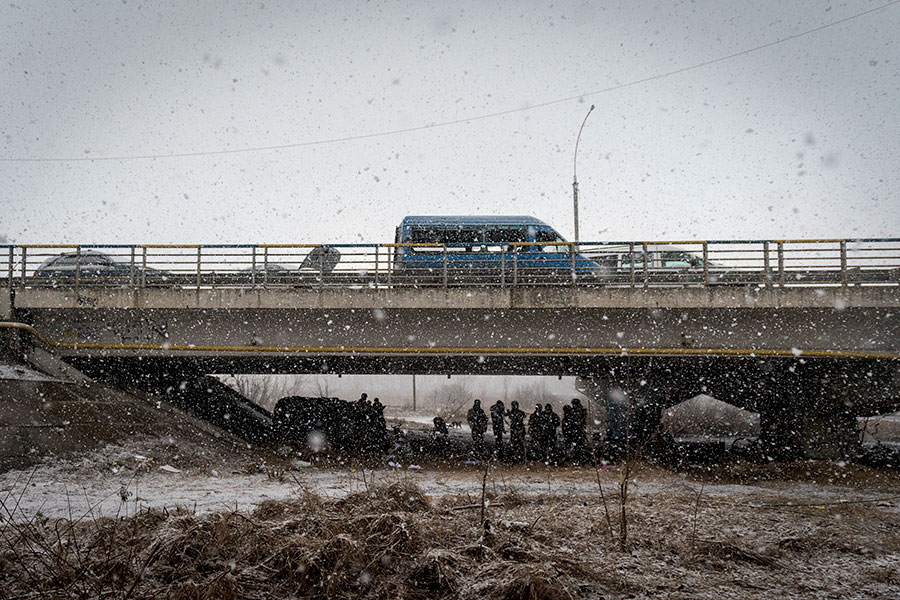
Occhicone returned to the city to photograph and assist with successive waves of evacuations near the battered bridge.
“I don’t know who said war is hell, but it is hell, and you’ve got to document it,” he said on March 17, describing the fear experienced by civilians leaving homes burned to the ground, carrying a “plastic bag with some shoes” in it.
By the end of March, Irpin was “an abandoned ghost town of ruined buildings,” Reuters reported, but Ukrainian forces had recaptured the city and helped prevent a siege of Kyiv.
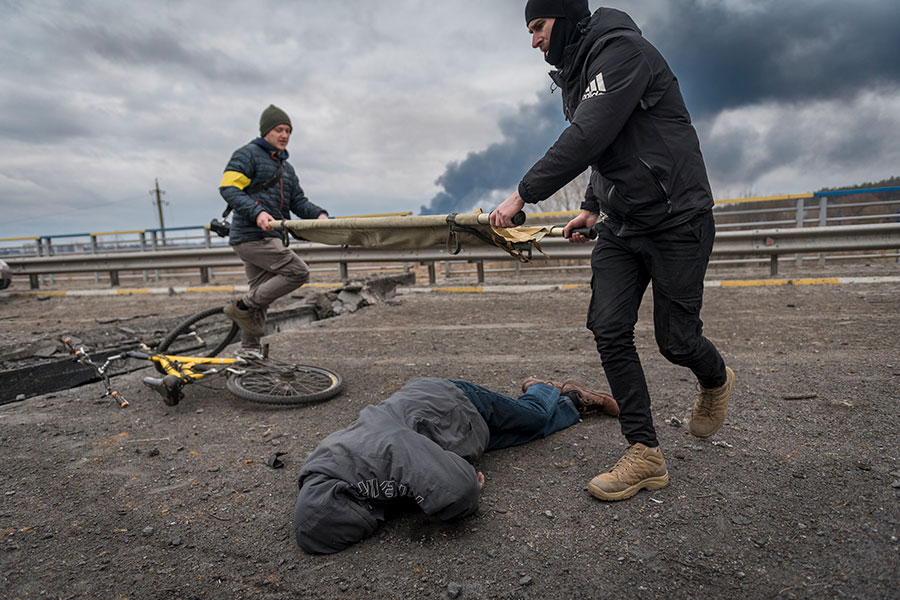
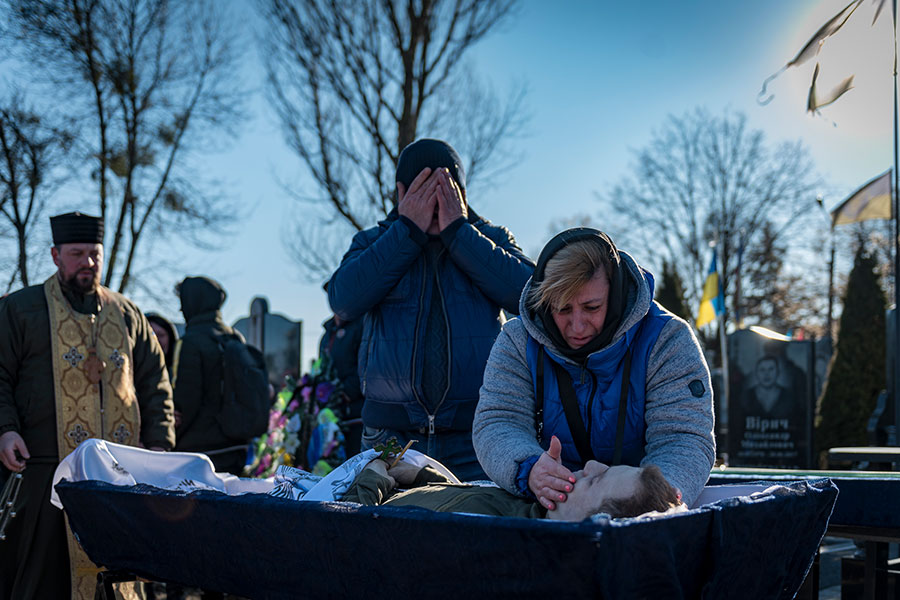
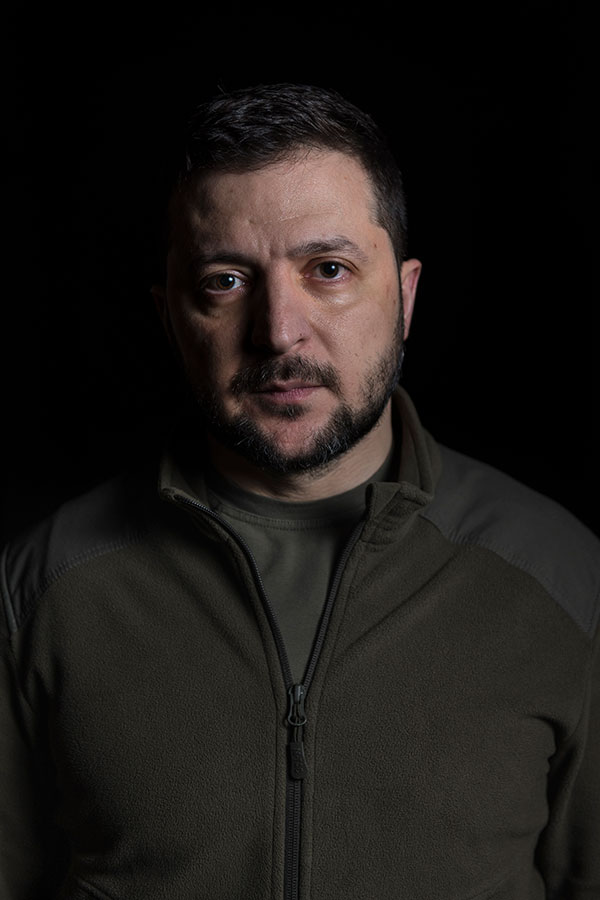
President Volodymyr Zelenskyy for The Atlantic. He
accompanied the magazine’s editor in chief, Jeffrey
Goldberg, and Anne Applebaum, who interviewed
Zelenskyy at his compound in Kyiv: “Ukraine can win—
and by ‘win,’ he means continue to exist as a sovereign,
if permanently besieged, state—only if its allies in
Washington and across Europe move with alacrity to
sufficiently arm the country,” they wrote.
In Bucha, Helping a Son Find and Bury His Father
In early April, Occhicone was one of the first photojournalists to arrive in Bucha, about 20 miles northwest of Kyiv, after it was liberated. “When we entered the city, we saw [people] putting the Ukrainian flag up at the city hall,” he said. He also saw and documented graphic evidence of war crimes.
Retreating Russian soldiers had left behind dozens of dead civilians, some with their hands tied—atrocities that prompted U.S. President Joe Biden to describe Russia’s war in Ukraine as genocide. In an auto repair shop in an industrial part of town, Occhicone photographed the body of a man in work clothes with a gunshot wound to his head. He apparently had been executed and left in a well in the garage.
“At the time, I didn’t know who he was. I just assumed he was a mechanic,” Occhicone said, “and my father’s an auto mechanic by trade—he owned a gas station, real estate, and other stuff, but that’s how he started out. So I see this older man executed in what I thought was his place of business, and that’s probably the one that affected me the most.”
About two weeks later, a Bucha city councilwoman contacted Occhicone. She had been collecting pictures of the atrocities from journalists and others in an effort to help residents locate missing family members, she said, and a young man had seen the picture of the man in the garage and recognized the body as his father’s. She asked if Occhicone would like to meet the family at the morgue in Kyiv in the morning.
Although he was in Romania, taking his first brief vacation in many months, he made the 12-hour drive to meet the family. At the morgue, he learned that the man, Myron Zvarychuk, was not a mechanic but a Ukrainian Orthodox priest. He had been associated with St. Michael’s Golden-Domed Monastery in Kyiv, and he was working at a small church in Bucha, where he had been renting a room from an older woman named Kateryna. On the day he disappeared, he had left to get food and water for her.
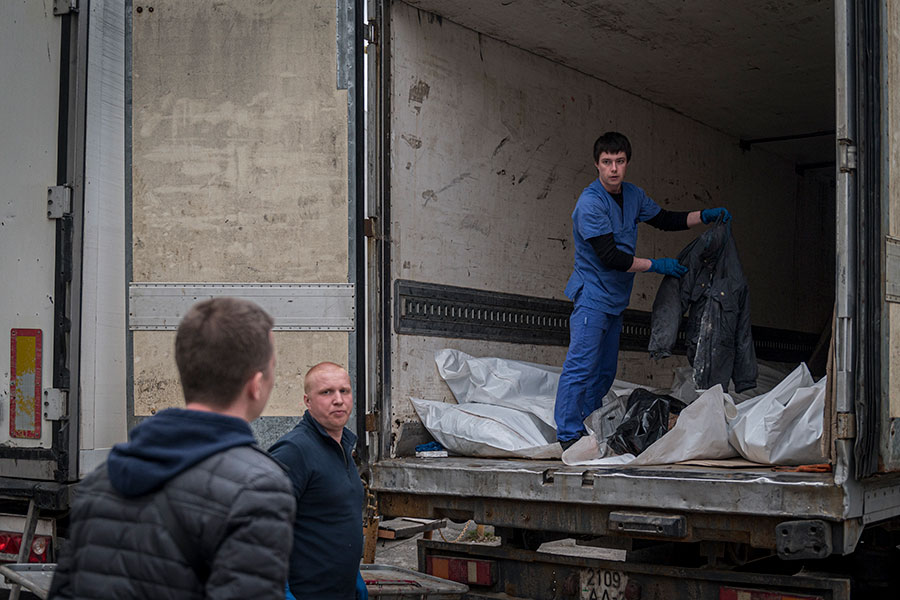
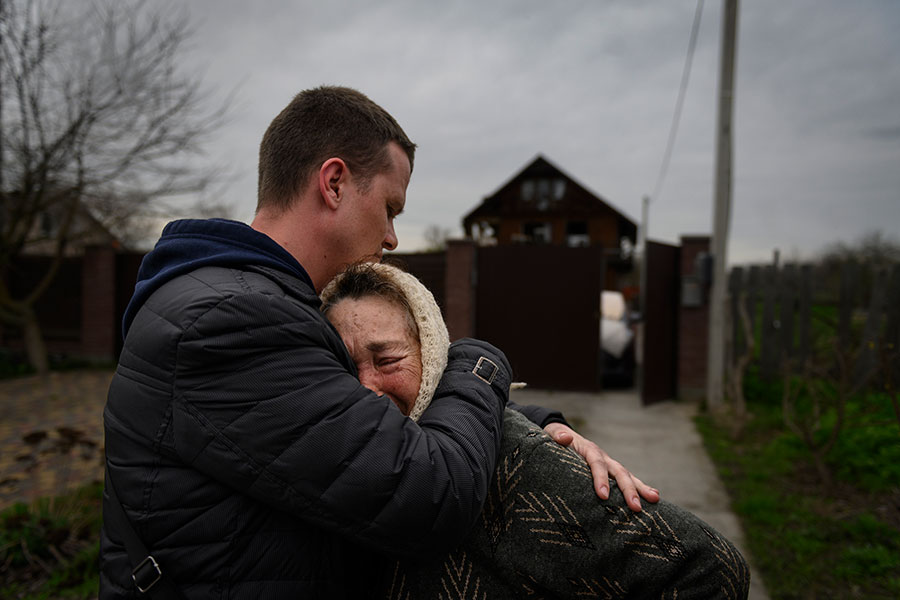
From the morgue, Occhicone accompanied the family to Father Zvarychuk’s room in Bucha, where they picked up the priest’s vestments. After returning to Kyiv to collect the body, they traveled to his native village, near Ivano-Frankivsk in western Ukraine, and Occhicone spent several hours at the family’s home before attending the funeral Mass and burial.
“To be able to meet the family and spend a day with them was really an incredible experience,” Occhicone said. “You normally don’t get to follow up on these things. You’re in a situation where there’s dead bodies all over the place, and it feels very surreal. But to be able to put a name to the man, to know something about him, to meet his family was really a great thing, you know. This guy was a loved person. People loved the village priest.”
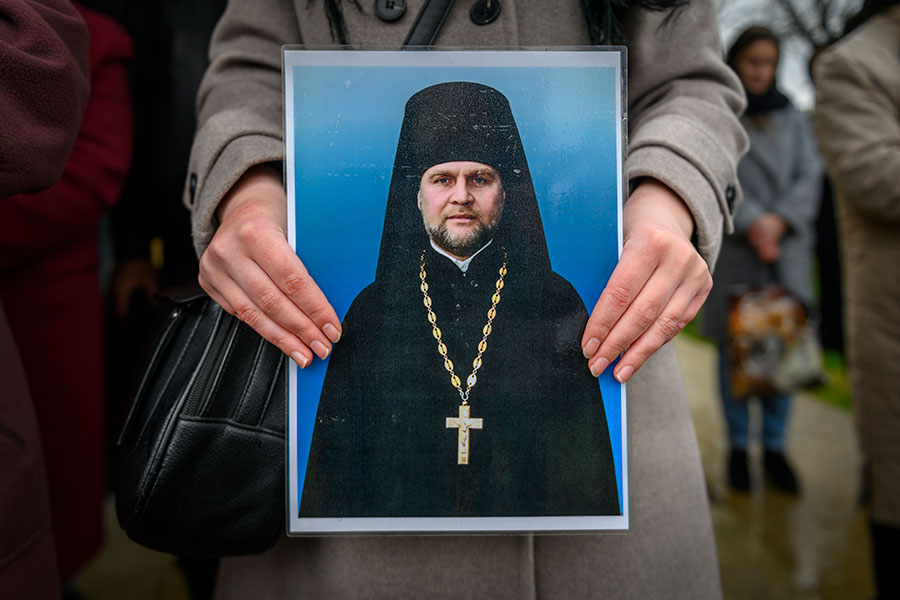
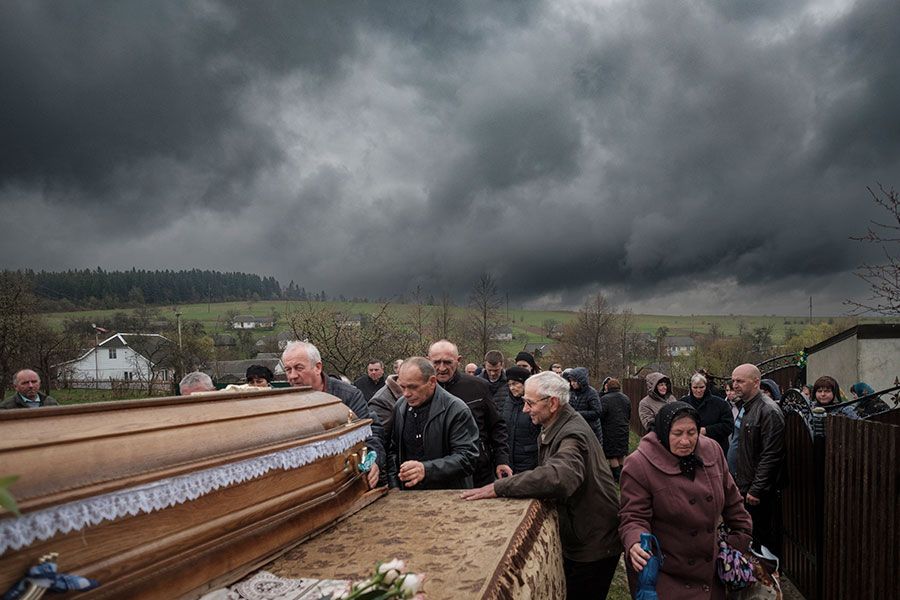

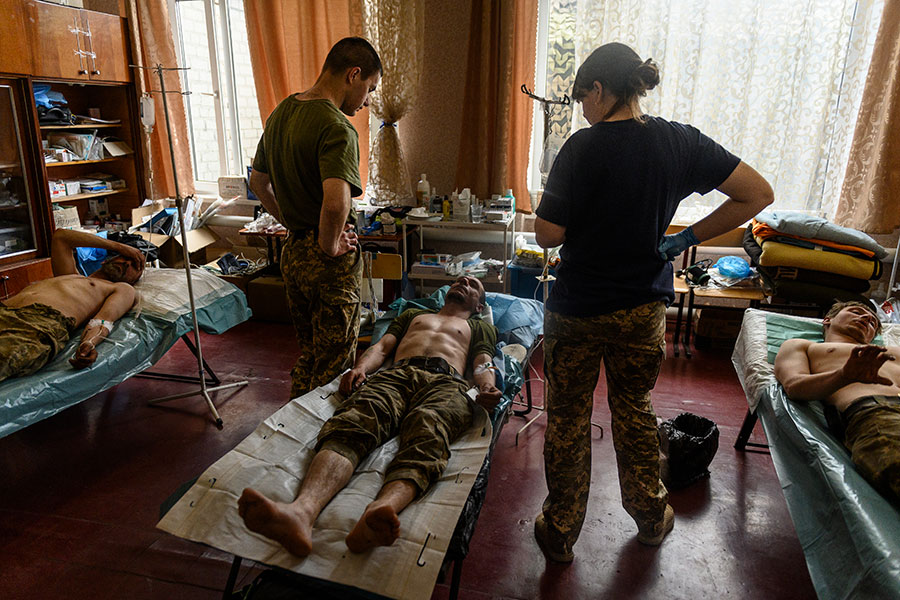
Capturing the Spirit of the Resistance
On March 10, while returning to Irpin to document the humanitarian evacuation of the city that was later retaken by Ukrainian forces, Occhicone made what has become his most iconic and widely seen picture of the war.
“In this atmosphere of fear,” he wrote on Instagram that day, “a woman emerges and she is bringing disabled dogs from a shelter to safety.”
He went to sleep after posting the picture, and “the next day, people were like, ‘The president just reposted you.’” He said the image was featured on the country’s official website, and it brought attention to the young woman, Anastasiya Tikha, a veterinary student who runs an animal shelter in Iprin. He allowed the image to be used by a dog food company that sought to raise money for people in Ukraine, he said, and with Tikha’s permission, he provided her bank account information to dozens of people who wanted to send her donations.
“People are making posters and memes of the image,” he said, “and sending me drawings of the photo from all around the world.” For many people, the image has come to symbolize “the cruelty of the Russian war and the dignity of the Ukrainian response,” The Guardian wrote in a May 23 article about Tikha.
“She’s a woman of action, and people love that,” Occhicone said. “And it’s dangerous. This is exactly where [U.S. journalist and filmmaker] Brent Renaud was killed [on March 13], and this girl took all the dogs out of the kennel and just walked them out of town.”
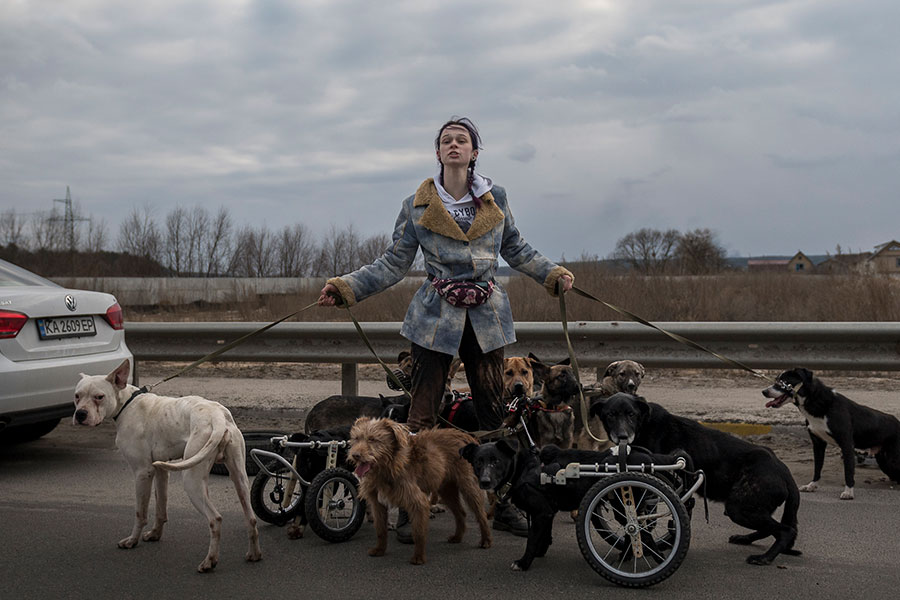
About Christopher Occhicone
After earning a bachelor’s degree in history from Fordham in 1995, Occhicone worked as a teacher in Poland and Italy, and pursued graduate studies in public health at Harvard University and conflict resolution at Seton Hall University. In 2014, he completed the one-year program in documentary practice and visual journalism at the International Center of Photography in New York City.
